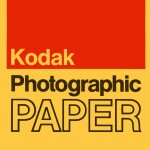The Eastman Kodak Company, also known as just Kodak or the Great Father of Photography, made just about everything that was needed for people to take and make pictures: Cameras; film; film processing chemicals; and photographic printing paper for both color and black & white prints – from wallet size to wall size murals.
In this article I am going to talk about the process of “printing a color negative”.
Way back in the 1940s & 50s everything photographic started from a color negative. True before that tintypes and glass plates had been experimented with, with some success. But Kodak’s film emulsions could be mass produced. And so from this camera exposed and Kodak processed film negative could be made: color prints of all sizes; color transparences and even Black & White prints.
The 3 original color negative films which Kodak made for still photography were: Kodacolor-X; Ektacolor Professional for both short ( Type S ) and for long( Type L ) exposures. And as new film camera formats were produced, Kodak made film for these sizes as well: 4×5; 120; 220; 35mm; and later 126 and 110.
All of the color negative film sizes were processed or “developed” with the Kodak C-22 Color Film Process. This resulted in negatives where the light and dark areas are reversed and there was an orange color cast to the film. This orange color cast was a “mask” to aid in making color prints.
Once you have a developed color negative the next step is to make a color print from it. This was Kodak’s “negative – positive” printing method, which made it possible to get the picture to a piece of special Kodak photographic paper. But to do this, one had to have a “darkroom”. And not just any dark room, but a light tight, pitch black room and one hopefully with some source of ventilation.
In this darkroom were several pieces of equipment. On one side of the room, the “dry” side was the negative “enlarger”. Some of the more popular brands were: Beseler; Omega, Durst and Leica. On the other side of the room, the “wet” side, were the print developing chemicals; a source of running water; a sink; plastic developing trays or if you were lucky a Kodak Model 11or 16 Drum Processor. And finally a dark amber safe light or two to see by. But even with those that room was still really, really dark.
The first step of the procedure would be to place the negative into the negative carrier of the enlarger, and then briefly turn on the enlarger light, which would shine through several color filters, and then the negative, onto the photographic paper below. The exposed paper was then either placed through a number of chemical baths in trays or placed onto the Kodak drum processor, if you had one. The chemistry used for this was Kodak’s Type C Processing chemicals: Developer; Stop-Fix: Bleach: Fixer and Stabilizer. Then in 1971 the processing kit was renamed the Ektaprint 3 Processing Chemicals: Developer; Beach-fix and Stabilizer. Finally, the paper was put through one more rinse bath and then dried. The developing process took about 8 minutes and the drying time about 5.
Through the years Kodak made multiple improvements in its film, photographic paperand chemicals. Unfortunately with time and industry growth the whole photographic process was going to change — Enter the new age of Digital Photography. Kodak with all of its film emulsion and chemistry making infrastructure, found it very hard to compete in this new arena, and so in 2012 Eastman Kodak Company filed for bankruptcy. This was to be the beginning of the end for the chemical based photographic industry. Companies stopped making “film” cameras, then film started to get harder to find and finally the One Hour photo labs started to close, one by one. Sadly, this was the end of an era – too bad, it was an exciting and fun time.
Now, as we are firmly in the age of Digital Photography, my next article will be about making Digital prints – Yeah, no more darkrooms.

